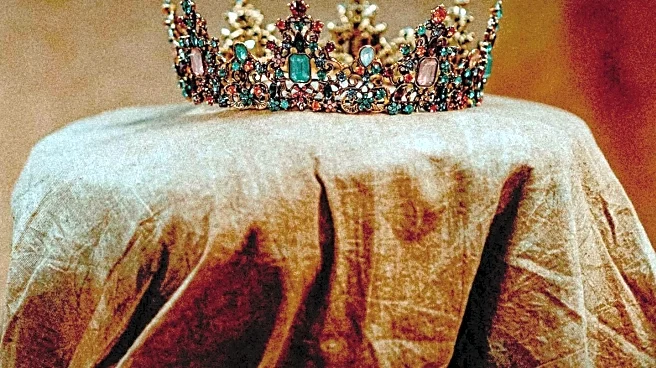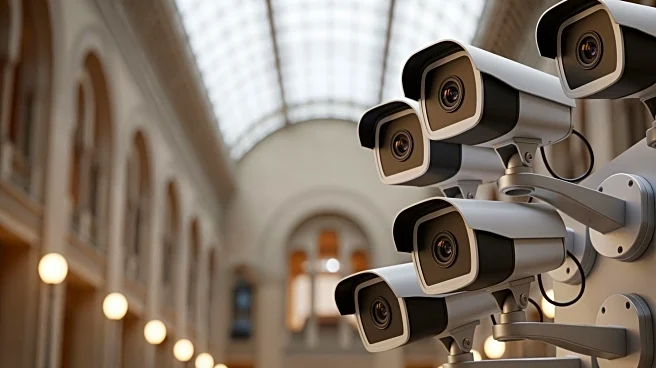What's Happening?
A recent heist at the Louvre Museum in Paris resulted in the theft of nine pieces of priceless jewelry, including a diamond and pearl tiara and a sapphire necklace once worn by French royalty. The French government
has valued these pieces at approximately $102 million. However, Stephen Portier, a master jeweler and Parisian gem appraiser, suggests that the thieves will struggle to sell the jewels intact due to their high profile. The stolen items are well-documented, with detailed descriptions akin to 'DNA' for each stone, making them difficult to sell on the black market. If the thieves attempt to dismantle the jewels to sell the stones individually, their value could decrease by up to 90%. The robbery has garnered significant attention, making it challenging for the thieves to find buyers without raising suspicion.
Why It's Important?
The theft of such high-profile items from a renowned institution like the Louvre highlights vulnerabilities in museum security and the challenges of protecting cultural heritage. The incident underscores the risks associated with the illegal trade of stolen art and jewelry, which often involves complex networks. The difficulty in selling these items intact suggests that the thieves may not have anticipated the challenges of fencing such well-known pieces. This situation could deter future heists, as the risks and potential losses outweigh the rewards. Additionally, the heist has implications for the art and jewelry markets, where provenance and authenticity are critical, and stolen items are often flagged, reducing their marketability.
What's Next?
Authorities are likely to intensify efforts to recover the stolen items and apprehend the perpetrators. The global attention on the heist may lead to increased security measures at museums worldwide. Dealers and collectors in the jewelry and art markets will remain vigilant, as any attempt to sell the stolen pieces could lead to arrests. The incident may also prompt discussions on improving security protocols and collaboration between international law enforcement agencies to prevent similar crimes in the future.
Beyond the Headlines
The heist raises ethical questions about the preservation and protection of cultural heritage. It also highlights the ongoing issue of art and artifact repatriation, as stolen items often end up in private collections, depriving the public of access to cultural treasures. The incident may lead to renewed calls for stricter regulations and international cooperation to combat the illegal trade of cultural property.











